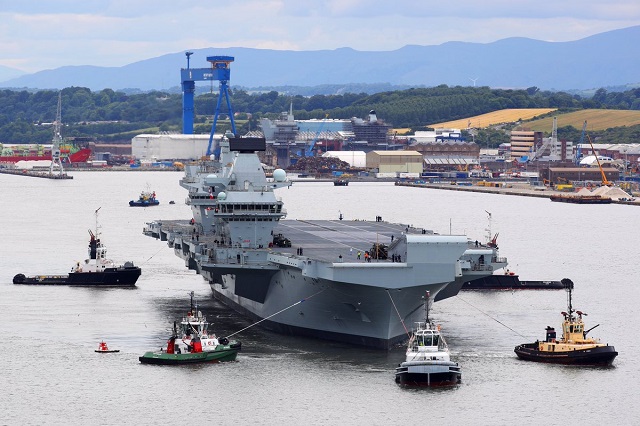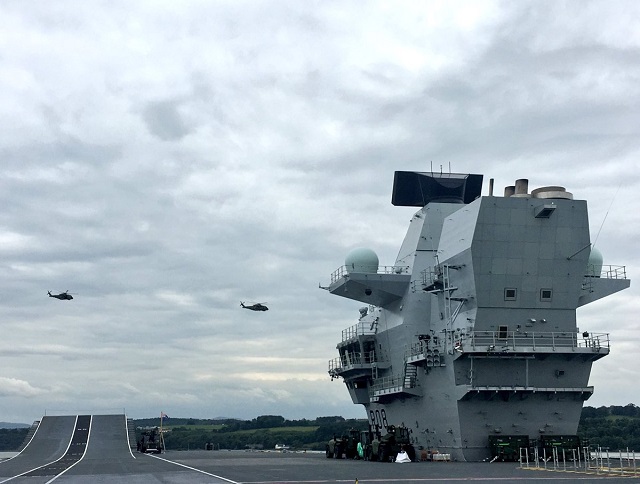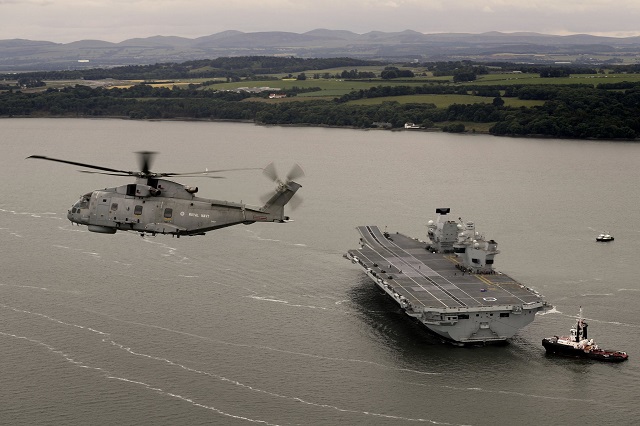|
|
|||
|
Drone footage of HMS Queen Elizabeth leaving the basin at Rosyth. Video via Save the Royal Navy
|
|||
|
There were just 35cm either side of the gigantic hull as the carrier squeezed through the lock at Rosyth, and a mere 50cm separated the keel from the lock bottom as 11 tugs assisted Queen Elizabeth into the Forth.
That delicate manoeuvre, practised more than 30 times in simulators, took place at high tide. Leaving the estuary must take place around low tide – and even then the pole mast must be lowered at a 60-degree angle to allow the carrier to fit under the rail bridge. |
|||
|
|
|||
 HMS Queen Elizabeth is about to start sea trials. Picture: Royal Navy HMS Queen Elizabeth is about to start sea trials. Picture: Royal Navy |
|||
|
“This is a hugely significant moment for the Royal Navy, for all our Armed Forces – and for our island nation. Once in service, Queen Elizabeth will be the largest aircraft carrier in the world outside the United States," said First Sea Lord Admiral Sir Philip Jones.
“There is still much work to do between now and then, but be in no doubt: a new era of British maritime power is about to begin.” The carrier’s departure is one highlight of a national effort which has involved more than 10,000 people across the land – not least six shipyards – devouring 51,000,000 man hours. |
|||
|
|
|||
 Two Royal Navy Merlin Mk2 helicopters from 820 Naval Air Squadron flew past HMS Queen Elizabeth. Picture: Royal Navy Two Royal Navy Merlin Mk2 helicopters from 820 Naval Air Squadron flew past HMS Queen Elizabeth. Picture: Royal Navy |
|||
|
Now, says Capt Kyd, the moment has come to see how the ship handles in the real world.
"There are very exciting times ahead," he said. “To see her just as a ship is too simplistic. HMS Queen Elizabeth is a mobile four-and-a-half-acre airfield. “What that means to the UK’s defence is that she’ll be deployed around the world, a very flexible asset used by all three Services. “There is an absolute and compelling reason to have aircraft carriers. We are an island nation, absolutely dependent on trade by sea – and law and order on the world’s sea routes. “If you are an outward-facing nation like global Britain, an aircraft carrier sends a real message to allies – and potential enemies – that we mean business.” HMS Queen Elizabeth is the largest and most powerful warship ever constructed for the Royal Navy. The ship will operate with a crew of approximately 700, increasing to the full complement of 1,600 when aircraft are in operation. The Ship’s Company moved on board earlier this month. Working alongside industry colleagues, they have been familiarising themselves with the new ship and the high tech systems on board as well as undergoing training. |
|||











